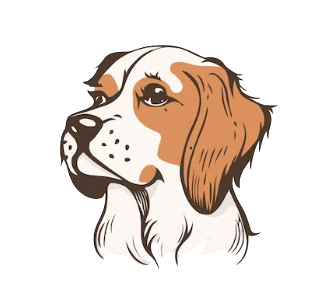Summery :
- General information
- Things
- What are the causes?
- What are the symptoms?
- What are the complications?
- What tests for diagnosis
- How is Elbow Dysplasia Treated in Dogs?
- Prognosis
- How much does the procedure cost?
1- General information
Elbow dysplasia in dogs , or canine elbow dysplasia , is a congenital skeletal disorder that affects the forelimbs and typically causes pain , lameness , and swelling.
Canine elbow dysplasia is a condition with a genetic basis, which is affected by various factors, including diet.
Elbow X-rays are often essential for the diagnosis of this disorder, which generally becomes apparent between the 5th and 18th months of life.
There is no curative therapy; however, the animal can count on various strategies useful for alleviating the symptoms and slowing the progression of the disease.
[blockquote align=”none” author=”Steve Jobs”]Your time is limited, so don’t waste it living someone else’s life. Don’t be trapped by dogma – which is living with the results of other people’s thinking[/blockquote]
2- Things
What is Elbow Dysplasia in Dogs?
Elbow dysplasia is a congenital condition of the skeletal system, characterized by the non-uniform development of the articular components of the elbow.
Affecting the forelimbs (where the elbow is located), elbow dysplasia in dogs is a pathology that is present from birth ( congenital ), but which manifests itself only during the animal’s developmental stage .
Canine elbow dysplasia is less common than the more well-known hip dysplasia , but like the latter it mainly affects large-breed dogs (although it can also affect smaller dogs).
What does dysplasia mean?
In the medical/veterinary field, the term dysplasia indicates an anomaly in the development or growth of an organ or tissue.
What Happens in Canine Hip Dysplasia?
As in humans, the elbow in dogs is a complex, hinged joint resulting from the perfect interaction of three bones of the forelimb known as the humerus , ulna and radius .
In a healthy dog, the joint components of the three aforementioned bones develop uniformly, so that the connection between the joint components is always optimal.
In a dog with elbow dysplasia, however, the various bone components of the joint develop differently , which is why at a certain point the correct connection between the different parts is lost.
Obviously, this abnormal development compromises the functionality of the joint and joint balance , with repercussions on the animal’s motor skills .
What has just been reported explains why elbow dysplasia, although a congenital condition, emerges only during the growth phase of the animal.
How many forms of Canine Elbow Dysplasia are there?
In reality, it would be more correct to define canine elbow dysplasia as a set of pathologies, which differ in the joint component involved and the type of specific alteration.
In short, these pathologies are:
Medial compartment disease (MCD).
Fragmentation of the medial coronoid process of the ulna (FCP);
Osteochondritis dissecans;
Nonunion of the anconeal process of the ulna (UAP);
3- What are the causes?
Elbow dysplasia in dogs is a condition of genetic origin , which, according to the most reliable hypotheses, seems to be affected by factors such as:
- Diet (nutritional imbalances and/or deficiencies);
- Environment;
- Past traumas ;
- Cartilage growth defects ;
- Hormones .
Which Dogs Are Most at Risk for Elbow Dysplasia?
Any dog can suffer from elbow dysplasia; however, this condition is seen more often in certain breeds, including:
- Bernese Mountain Dog;
- German Shepherd ;
- Labrador Retriever;
- Golden Retriever;
- Rottweilers;
- Bulldog;
- Bobtail;
- Mastiff.
In general, elbow dysplasia is more common in large or giant breed dogs.
4- What are the symptoms?
How does Elbow Dysplasia manifest itself in dogs?
Generally (more than 80% of cases), canine elbow dysplasia affects both front limbs ; however, sometimes it can affect only one limb.
The dog suffering from elbow dysplasia typically manifests:
- Bilateral or unilateral lameness ;
- Swelling at the elbows;
- Weakness and pain in the affected limbs;
- Pain on palpation ;
- Joint stiffness and reduced range of motion of the joint;
- Elbow protruding outwards ;
- Reluctance to move , run and jump;
- Atrophy of the muscles of the forelimbs .
In general, canine elbow dysplasia is obvious: even the owner is able to notice that the dog has a disorder that affects the joints of the front limbs.
In some cases, however, the disease can have more subtle consequences, so much so that its diagnosis often occurs at a late age, when it has severely compromised the cartilage ( arthritis ).
Elbow Dysplasia in Dogs: When Do the First Signs Appear?
Most dogs with elbow dysplasia begin to show the first symptoms of the condition between 5 and 18 months of age .
It should be noted that dogs with mild forms of hip dysplasia may only show symptoms of the disorder in adulthood and only after the joint degeneration has reached a certain degree of severity.
5- What are the complications?
In dogs, elbow dysplasia causes a progressive degeneration of the cartilage, which leads to very serious forms of arthritis ( inflammation of the cartilage); arthritis leads to a further worsening of the symptoms and joint function.
6- What tests for diagnosis
Elbow Dysplasia in Dogs: How to Recognize It?
The first step in the diagnostic process is the physical examination , during which the veterinarian examines the dog, watches how it walks and performs tests to understand which movements cause pain (generally, a dog with elbow dysplasia has pain when it fully bends or extends the limb).
The second step is the elbow x-ray , an instrumental examination that often allows a definitive diagnosis of elbow dysplasia to be made.
In cases of doubt, veterinarians may resort to other diagnostic imaging tests, such as CT scan , diagnostic arthroscopy or MRI .
When to contact the vet?
A dog owner should consult a veterinarian for further information when owning a dog of a breed typically associated with elbow dysplasia.
In essence, if you decide to adopt a German Shepherd, for example, one of the first things to do is to request a veterinary consultation to assess the animal’s joint health.
7- How is Elbow Dysplasia Treated in Dogs?
Unfortunately, there is currently no treatment or drug that can cure canine elbow dysplasia , restoring the joint and its functionality.
Once this aspect is clarified, there are various therapies that can help improve the symptoms and slow down the progression of the disease.
Among these therapies, the most important and used is, without a doubt, surgery ; then, there are pharmacological therapies for pain and some lifestyle precautions.
Surgery
Surgical treatment for canine dysplasia in dogs involves the removal of damaged or diseased tissue and the re-adaptation of the joint anatomy in order to restore the functionality of the joint in a way that is compatible with the dog’s movements.
Surgery cannot be considered a specific treatment for elbow dysplasia, because, although it leads to an improvement in the symptomatic picture, it permanently alters the natural anatomy of the elbow; this means that the joint will still experience arthritis, although at a later stage and in a less severe way.
The exact features of surgery depend on the type of elbow dysplasia present.
Typically, surgery is performed arthroscopically ; more rarely, it is performed using traditional (open) surgery.
The post-operative phase includes a period of rest, which the dog must adhere to in order to promote tissue healing.
Drug therapy against pain
The most commonly used pain medications in the presence of elbow dysplasia are NSAIDs .
These drugs control the inflammatory symptoms, but do not in any way stop the progression of the disease.
Lifestyle
Owners of dogs with elbow dysplasia must monitor the animal’s weight , avoiding overweight and obesity , conditions that worsen the symptoms.
To control the animal’s weight, not only diet is essential , but also physical exercise , which must be adapted to the dog’s health conditions (too much exercise could worsen the symptoms; too little, however, may not be enough to counteract the risk of obesity).
Are there any supplements for elbow dysplasia in dogs?
Some veterinarians recommend supplements containing glucosamine and chondroitin sulfate , as they appear to reduce inflammation and relieve symptoms.
Exactly like pain medications, supplements do not stop the progression of the disease.
Can rest help?
In the most acute moments of symptoms, keeping the dog at rest can help alleviate the symptoms.
8- Prognosis
The prognosis for canine elbow dysplasia depends on several factors, including early diagnosis, timely treatment, and the severity of the condition itself.
Generally speaking, if the elbow dysplasia is moderate-mild and treatment is timely, the dog has a good chance of getting better and recovering a good part of its joint function.
How much does the procedure cost?
Surgery for elbow dysplasia in dogs can cost around $1,500 or more , depending on the veterinary clinic you go to.



